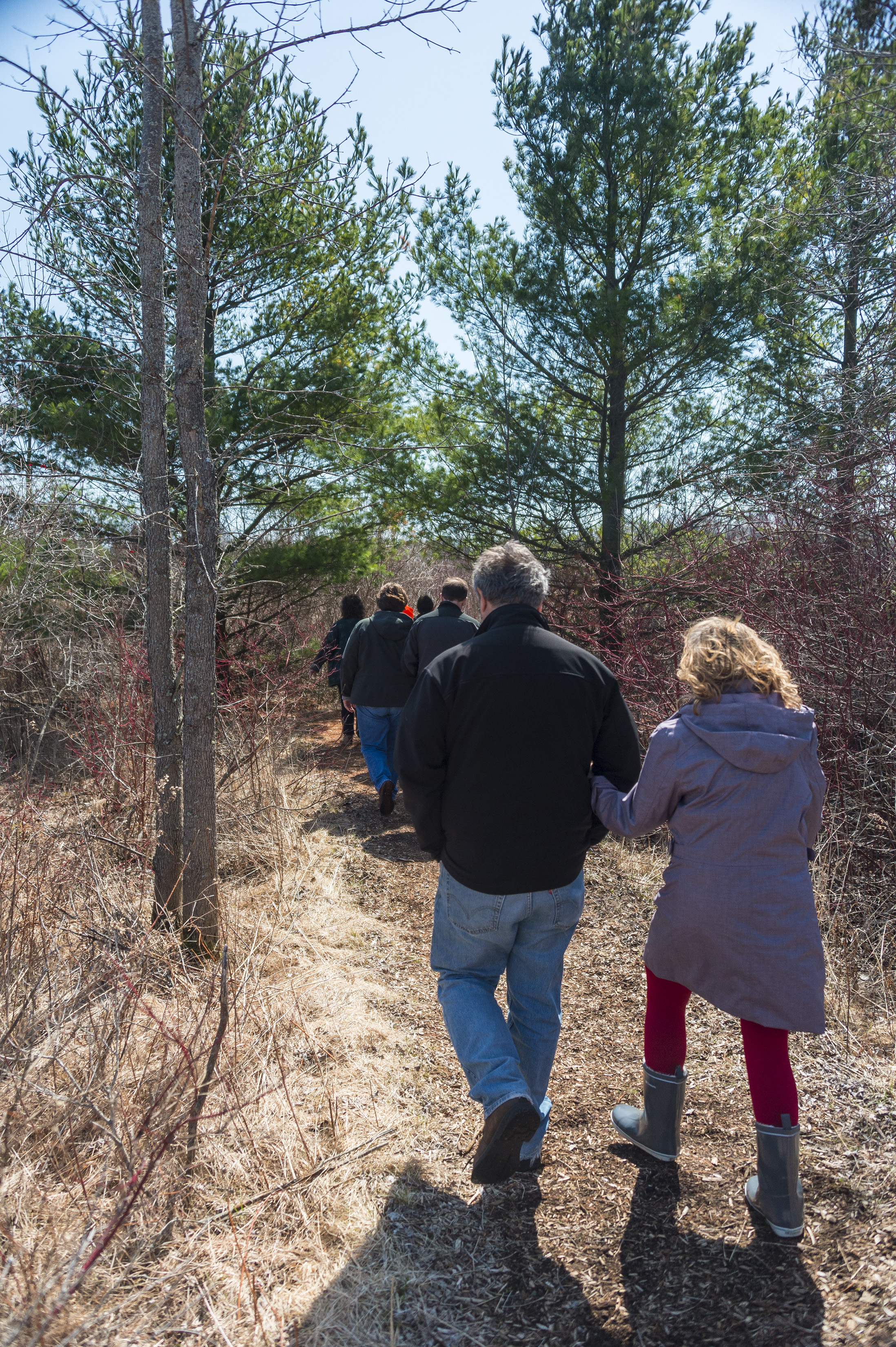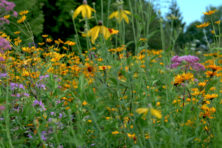Wild Ones: Fish Guy’s Wife Was Right About Trees
- Share
- Tweet
- Pin
- Share

Photo by Len Villano.
A few weeks ago at the peak of fall colors, I noticed a gentlemen looking at the fish display at Crossroads at Big Creek. I asked him if he needed help. No, he was waiting for his wife.
“She dragged me up to Door County to see the fall colors,” he explained. “I’m not exactly a fan of trees. I’m a fish guy.”
Well, the aforementioned wife finished in the restroom and was eager to go leaf peeping, so Fish Guy was spared my lecture. But really, all fish guys should care about trees – particularly native trees.
Without a buffer of trees, a stream would be seriously degraded. Trees create shade, keeping the water cool. Tree roots help stabilize the banks and keep sediments from muddying the water or altering the channels.
Perhaps most importantly, this time of year, the trees shed their leaves, creating what ecologists call a detritus-based food web.
Food webs are all about the transfer of energy. Green leaves capture the energy of the sun to make food. So in autumn, when leaves fall into a stream, the first thing that happens is that some of the organic matter dissolves in the water. Bacteria and fungi are able to feed on this nutrient infusion. They, in turn, become food for tiny creatures which become food for aquatic insects that become food for fish.
After the leaves have been in the water for a few weeks, and after bacteria and fungi start decomposing them, the “shredders” move in. Shredders are insects and crustaceans that feed by tearing apart the slimy, rotting leaves. The scraps left by the shredders are collected by a number of insect species collectively known as “collectors.” Shredders and collectors then are consumed by small fish that are finally eaten by large fish. This is oversimplified, but you get the drift. Energy flows from leaves to fish.
In rock-bottomed creeks or in streams with fast currents, autumn leaves are just about the only source of plant nutrients. Tree-lined streams are replenished annually. But in areas which have been cleared of forests or have grass growing right up to the banks, streams become nutrient poor. Almost always, they lack sufficient food to support a healthy population of fish.
But there is another reason the Fish Guy should care about trees. He would know that fish feed on insects they find on the surface of the water. Flying insects occasionally fall out of a clear blue sky, but small, highly nutritious caterpillars drop out of trees. Actually, caterpillars drop out of native trees, but not from trees from other parts of the world. So, for example, a stream lined with buckthorn or phragmites would not contain the nutritious caterpillars that many freshwater fish feed on during the spring and early summer.
Food webs are more complex than any of us realize, but whether we are talking about fish or mammals or songbirds, native trees are essential for a healthy habitat. Ecosystems are dependent on natives species. But Fish Guy’s wife was right. In color season, native trees really are worth a trip.
Wild Ones of the Door Peninsula Hosts Native Plant Expert
Wild Ones of the Door Peninsula is a group dedicated to promoting the use of native plants. On Thursday, Nov. 8, at 7 pm, Wild Ones will sponsor a lecture in the Collins Learning Center of Crossroads at Big Creek. Justin Kroening, owner of De Pere’s Stone Silo Prairie Gardens, will present “The Importance of Native Plants in Home Landscapes.” This program will be free and open to the public.
Kroening graduated from the Northeast Wisconsin Technical College Landscape Horticulture program in 2011. Shortly after, he purchased Stone Silo Prairie Gardens and started his native plant journey. The program is free and open to the public.
“Native plants serve a function in any landscape, large or small. Even in the average city lot, gardeners can incorporate native plants. Using well-behaved native plants in a landscape setting will not only be attractive but will also improve the environment for many types of wildlife,” said Kroening.
Kroening will present information about selecting and grouping native plants to create a natural environment in your landscape.
Crossroads at Big Creek is located at 2041 Michigan St., Sturgeon Bay. For more information about the Wild Ones visit wildones.org.
Coggin Heeringa is director of Crossroads at Big Creek and also serves as vice president of the Door Peninsula chapter of Wild Ones.

